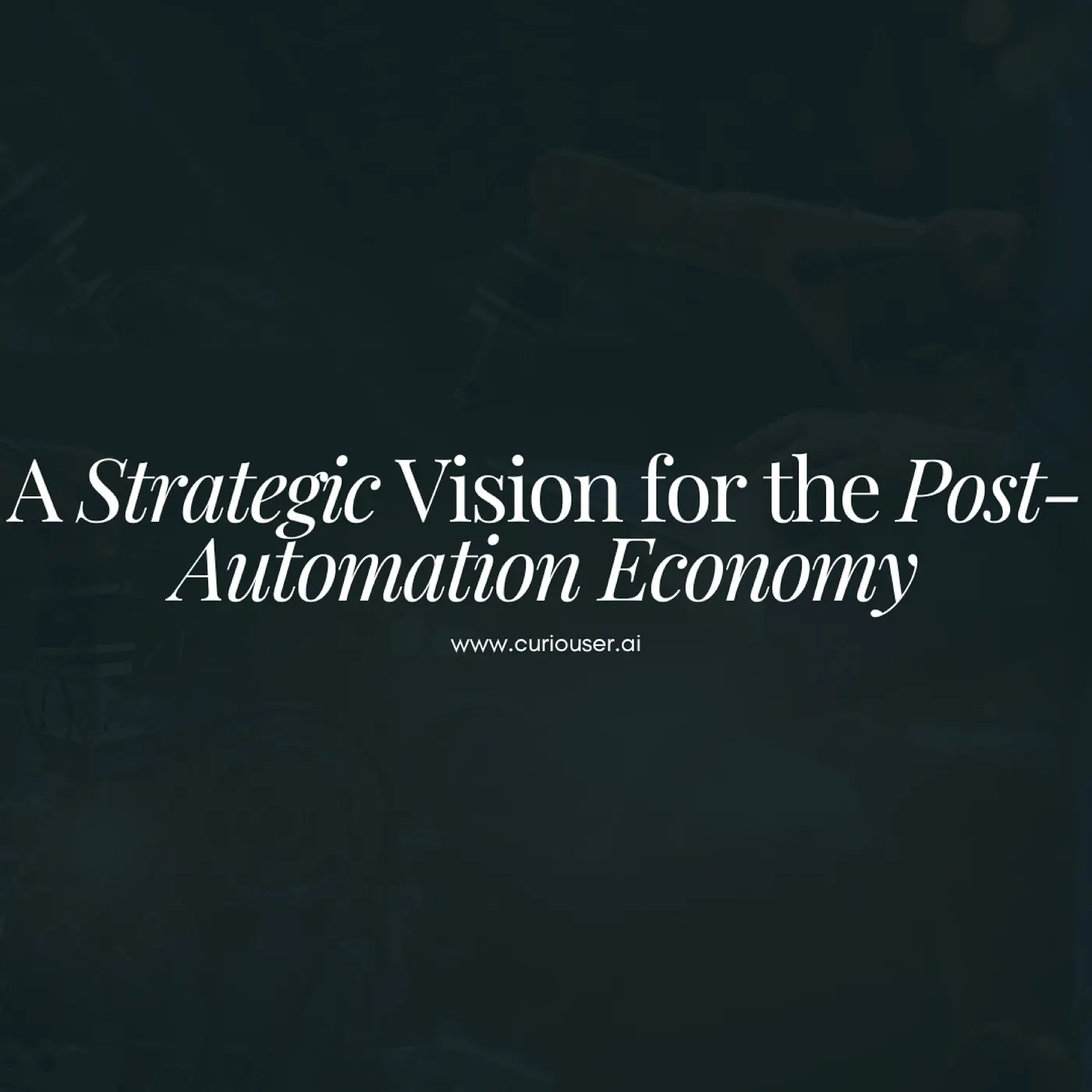

Executive Summary
This paper explores the long-term consequences of widespread task automation and generative AI adoption across knowledge work, customer service, and organizational workflows. It argues that as automation reaches saturation, competitive advantage will shift from efficiency and cost leadership to meaning, trust, and values alignment. The companies and institutions that succeed in the next phase of economic evolution will be those that prioritize ethical design, human connection, and imaginative leadership.
1. The Completion of the Automation Curve
Over the past two decades, organizations have pursued increasing levels of automation across operational and cognitive domains. With the rise of large language models and AI-enabled productivity tools, this process is accelerating into traditionally "human" territory, writing, planning, decision-making, and synthesis.
Recent research confirms this trend:
• McKinsey (2023) reports that 70% of organizations have adopted generative AI, primarily to reduce costs and improve speed.
• IBM (2022) found that 82% of executives surveyed aim to "automate as many processes as possible" within the next five years.
However, saturation is nearing. Most tasks that can be automated under current models already are. The marginal returns on further automation are declining, especially where customer experience, quality, or employee engagement are involved.
2. The Economic and Psychological Consequences of Over-Automation
While automation has created short-term efficiencies, it also presents long-term challenges:
• Declining Worker Engagement: Gallup's 2023 Global Workplace Report shows continued drops in engagement and purpose, particularly in sectors adopting AI tools without parallel investment in culture and mission.
• Diminished Innovation Capacity: MIT researchers (Brynjolfsson et al., 2021) found that firms over-indexed on automation saw reduced innovation due to diminished exploratory behavior by employees.
• Quality of Customer Experience: Capgemini (2023) reported that customer satisfaction declined in 41% of cases where AI replaced human interaction entirely.
These effects suggest that beyond a certain threshold, further automation undermines the very systems it aims to optimize.
3. Strategic Differentiation in a Post-IP, Post-Moat Environment
Simultaneously, traditional sources of competitive advantage are eroding:
• Open-source AI models and tools are narrowing technical differentiation.
• Global supply chain parity and platform standardization are compressing cost advantages.
• IP enforcement is increasingly limited by legal backlogs and cross-border violations.
In this context, intangibles, particularly trust, ethics, and brand authenticity — emerge as the only sustainable levers of differentiation.
Evidence supports this shift:
• 82% of consumers are more likely to buy from brands that align with their values (IBM, 2022).
• 56% of employees would accept lower pay for a values-driven employer (Glassdoor, 2023).
• 70% of a company's external reputation is tied to CEO behavior and perceived integrity (Weber Shandwick, 2021).
4. The Transition from Optimization to Meaning
As automation completes its cycle, organizations will be required to answer a fundamentally different question:
What do we stand for, now that speed, scale, and cost are no longer differentiators?
This question reframes strategic focus around:
• Purpose-driven work environments
• Human-centered design and interaction
• Operationalized ethics (not just compliance)
• Leadership accountability and cultural alignment
• Long-term trust over short-term scale
5. Policy and Organizational Implications
Organizations and institutions preparing for the next phase of AI deployment should consider the following imperatives:
1. Reinvest in Human-Centered Roles
Protect and revalue roles that require empathy, judgment, storytelling, negotiation, and ethical reasoning — areas where machines underperform or should not operate independently.
2. Operationalize Ethical Frameworks
Move beyond advisory-level ethics to integrated decision-making principles that inform hiring, product design, and AI governance.
3. Shift Performance Metrics from Output to Outcomes
Develop KPIs that measure impact, trust, and user experience — not just quantity of work produced.
4. Redesign Work for Reflection and Depth
Create conditions where time, autonomy, and reflection are seen as strategic investments in long-term capability, not inefficiencies.
5. Build Brand Around Integrity, Not Identity
Customers are increasingly skeptical of performance marketing and brand aesthetics. Trust is built through consistent behavior, not messaging.
The acceleration of automation is not the end of human work. It is a narrowing of the field to those forms of work that are distinctively human — those that cannot be easily measured, replicated, or synthesized.
This includes:
• Strategic imagination
• Ethical discernment
• Emotional intelligence
• Cultural fluency
• Systems thinking
As the measurable is fully optimized, the immeasurable regains value.
Written by Stephen B. Klein
References
- IBM Institute for Business Value. (2022). Own Your Transformation.
- Gallup. (2023). State of the Global Workplace.
- Edelman. (2023). Trust Barometer: Navigating a Polarized World.
- Glassdoor. (2023). Workplace Trends Report.
- McKinsey & Company. (2023). The Economic Potential of Generative AI.
- Brynjolfsson, E., Rock, D., & Syverson, C. (2021). The Risks of Automation Myopia, MIT Sloan.
- Weber Shandwick. (2021). The CEO Reputation Premium.
- Capgemini. (2023). AI at Scale: Insights on Adoption and Customer Experience.


